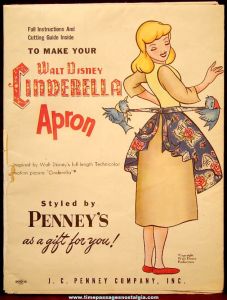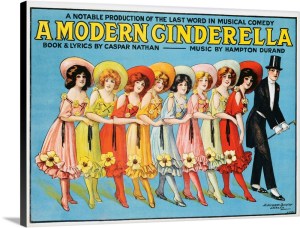Hi and welcome back! Recently, I found this interesting new writeup about how the Cinderella fairy tale has evolved over the past 60ish years. As narratives go, Cinderella has alternated between capturing American women’s imaginations to repelling them, then back again to charming them. Today, Lord Snow Presides over a fairy tale that speaks to how we feel, ultimately, about relationships — and people are examining this age-old love narrative from a modern perspective.

The Cinderella Fairy Tale.
Way back in the 1600s, according to La Wiki, Giambattista Basile first set down the first Cinderella story in Europe. However, the outlines of the story — a girl with dainty feet who goes from servitude to royalty by marrying well — has existed for many centuries.
The ancient Greek myth of Rhodopis may be one of the first tellings of the Cinderella story around 24CE — but centuries earlier, it was a known story. Once Europeans caught on to it, the story of Cinderella pops up in the writing of 17th-century writer Charles Perrault (famous for popularizing the fairy-tale story format) and the 18th-century Brothers Grimm (famed collectors of folklore). In the Aarne–Thompson–Uther folklore categorization system, Cinderella is Tale Type 510A: the Persecuted Heroine.
Charles Perrault largely set the tropes we usually see with the fairy tale nowadays: the angry stepsisters, the glass slipper itself, the pumpkin transformed into a carriage, and the fairy godmother who steps in to help Cinderella achieve her dreams.
Then, in 1950 Walt Disney’s animation studio released their own take on the story. They added a few elements, most notably including animal helpers (and an animal antagonist, the stepmother’s cat Lucifer) and catchy songs.

Disney’s creation became a smash runaway hit and was nominated for three Oscars. Since then, they’ve released a couple of sequels to the their movie (in 2002 and 2007) and a live-action remake (2015). Reviews were largely positive of that last one. Financially speaking, it did quite well there, too.
So modern audiences seem receptive to this age-old fairy tale’s messages.
The Cinderella Morality Tale.
Like all fairy tales, Cinderella functions largely as a morality lesson for women:

But there’s a subtle under-message going on here, too, and Charles Perrault is the one who set it there:

And one can’t escape the subtext lessons imparted by any of these stories, like this one:

We could go on, of course. We could talk about the idea of awarding good girls with their own Prince Charming (a notion American men seem to have always resented), or about how the story presents lifelong happy marriage as the prize for female obedience, which is a myth that today’s evangelicals push hard.
Speaking of evangelicals, there’s a certain element of prosperity gospel and power-of-positive-thinking in this fairy tale. Maybe that’s why it flourished in American culture when it did. At certain times, this story appealed mightily to American women — and at other times, women hated it just as much as men do.
The Rise and Fall of the Cinderella Story.

In a recent Time article, we see a scholarly look at the enduring popularity of the Cinderella story. First and foremost, its author, Carol Dyhouse, centers the popular Disney movie in its time. And like all Disney movies, this one was very much a product of its time.
Though Disney had begun work on the ideas in the movie decades earlier, American culture was absolutely ready for this fairy tale. Indeed, Cinderella had been busy. She’d appeared in picture books, plays, ballets, and even a huge musical by Rodgers and Hammerstein. She’d also appeared in advertisements, comic book and romance novel stories, and even cosmetics lines. So, very few audiences in American history were prepped quite like this one for this one particular movie.
By the 1960s, though, American women had begun to figure out that Cinderella was just a myth — and had begun to reject its ideas. They’d begun to question the narratives involved here: true love, happily-ever-after, obedience resulting in dream-attainment, all of it. Most especially, they’d begun to question the validity of the Prince Charming myth.
These days, it seems, we’re on a downswing with Cinderella affection.
Cinderella in the Modern Age.
In today’s brutal marriage market, especially, women have returned to criticizing the Cinderella myth. Just in a quick survey of search results, I see these posts:
- “Why Modern Day Girls Don’t Need A Prince Charming.” The writer starts by revealing her deep hopes of finding her own Cinderella success — and how reality destroyed those hopes.
- “I Don’t Want a Prince Charming Who Claims He Can Solve My Problems, I Want a Lover Who Won’t Ever Become a Problem.” The writer is concerned that this myth may prevent women from becoming self-sufficient and make them passive instead of active romantic partners.
- “We need an end to the Disney myth in which girls are defined by their looks.” This one’s more about the 2015 Disney live-action remake of Cinderella, and to me it’s an odd take on the story. (To me, the story’s much more about Cinderella’s extreme obedience than her beauty, but whatevs.)
- “I Don’t Want My Son to Think He Has to Be Prince Charming.” I liked this one, told from a very different point of view.
- “The Problem With Prince Charming.” A pointed criticism of Disney princes — and praise for Kristoff from Frozen. (That movie really is kinda the anti-Cinderella.)
There are lots of other similar writings to be found online. Most center themselves around declarations of self-sufficiency (like this post and also this one). Suffice to say: analyzing the popularity of Cinderella’s story — and rejecting it — takes up a lot of time these days.

The Narratives of Love.

Humans have long delighted in fantastical stories told about love. Cinderella is just one of those stories. Many others exist, and many of them offer very different lessons for both men and women.
When I was a little bitty kid, my parents took me to see Star Wars in theaters. It’s impacted me in so many ways, especially in how I looked at relationships growing up. I couldn’t even imagine a heart that didn’t melt at the “I know” exchange in The Empire Strikes Back — which was then delightfully reversed in the next movie.
(When Empire came out, girls back then divided themselves into “Luke girls” and “Han girls” — just like girls in the late 2000s and early 2010s sorted themselves into Team Jacob and Team Edward. I was most definitely a Han girl, while my sister and a lot of our friends were Luke girls. Sorry, Mark Hamill!)
That wasn’t the only narrative I internalized, either; the secondary characters’ relationship in The Last Unicorn affected me profoundly, as did the subtle and powerful relationship between Gomez and Morticia the Addams Family movies.
Other women look for “the Jim to their Pam,” or “the Joker to their Harley.”
Yes, narratives can be powerful. They can shape both our expectations and hopes around relationships and those actual relationships themselves.
Questioning the Narrative of Cinderella.
Is anyone else upset about the non-existence of prince charming? [. . .] Sometimes I just feel totally p.o.’d by life’s inability to grand [sic: grant] me the prince charming that I thought I deserve!
The Cinderella story is just one of the many love-narratives that women have, through changing times, accepted and rejected and fought with by turns.

It’s good that people are questioning this one in particular, I think. Cinderella offers women nothing but false promises of love and security based on their level of obedience and compliance in even the most unfair of circumstances. It leads to judging very real men by the fictional Prince Charming ideal. It leaves women hurting when Prince Charming never shows up to sweep them off their feet, or when an abuser wears that costume to gain their confidence and then wrecks their lives.
And of course, it objectifies both the men and women in its story and sets them within stereotypical conceptualizations of masculinity and femininity.
Today, Lord Snow Presides over the Cinderella story — and how this age-old love narrative is being dismantled and criticized these days.
NEXT UP: How authoritarian Christians think they’re going to better keep the few recruits they actually find. Interestingly, they require no gods at all for their newest strategy! Then, I’m thinking we’ll segue into that genetics news briefly. See you tomorrow.
Please Support What I Do!
Come join us on Facebook, Tumblr, and Twitter! (Also Instagram, where I mostly post cat pictures, and Pinterest, where I sometimes post vintage recipes from my mom’s old recipe box.)
Also please check out our Graceful Atheist podcast interview!
If you like what you see, I gratefully welcome your support. Please consider becoming one of my monthly patrons via Patreon with Roll to Disbelieve for as little as $1/month! My PayPal is captain_cassidy@yahoo.com (that’s an underscore in there) for one-time tips.
You can also support this blog at no extra cost to yourself by beginning your Amazon shopping trips with my affiliate link — and, of course, by liking and sharing my posts on social media!
This blog exists because of readers’ support, and I appreciate every single bit of it. Thank you. <3
About Lord Snow Presides (LSP)
Lord Snow Presides is our off-topic weekly chat series. Lord Snow was my very sweet white cat. He actually knew quite a bit. Though he’s passed on, he now presides over a suggested topic for the day. Of course, please feel free to chime in with anything on your mind: there’s no official topic on these days. We especially welcome pet pictures!